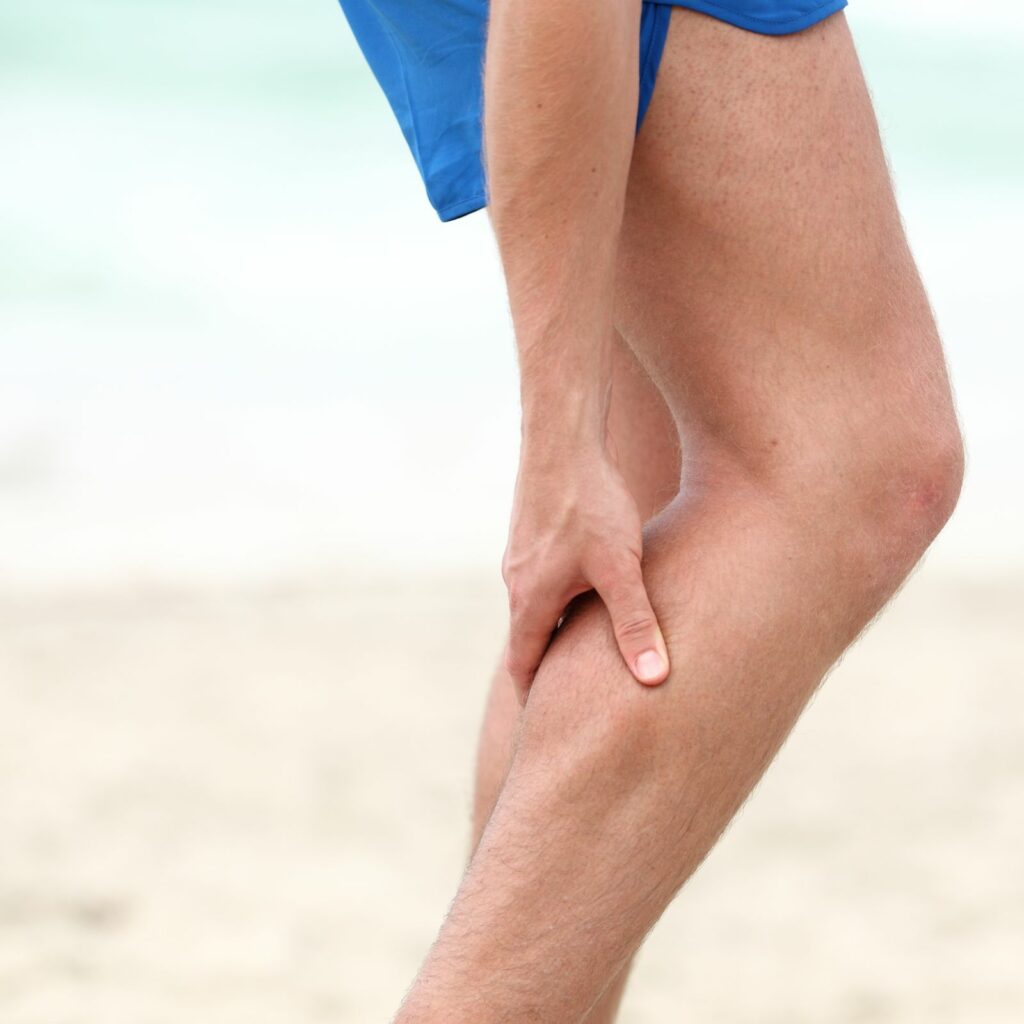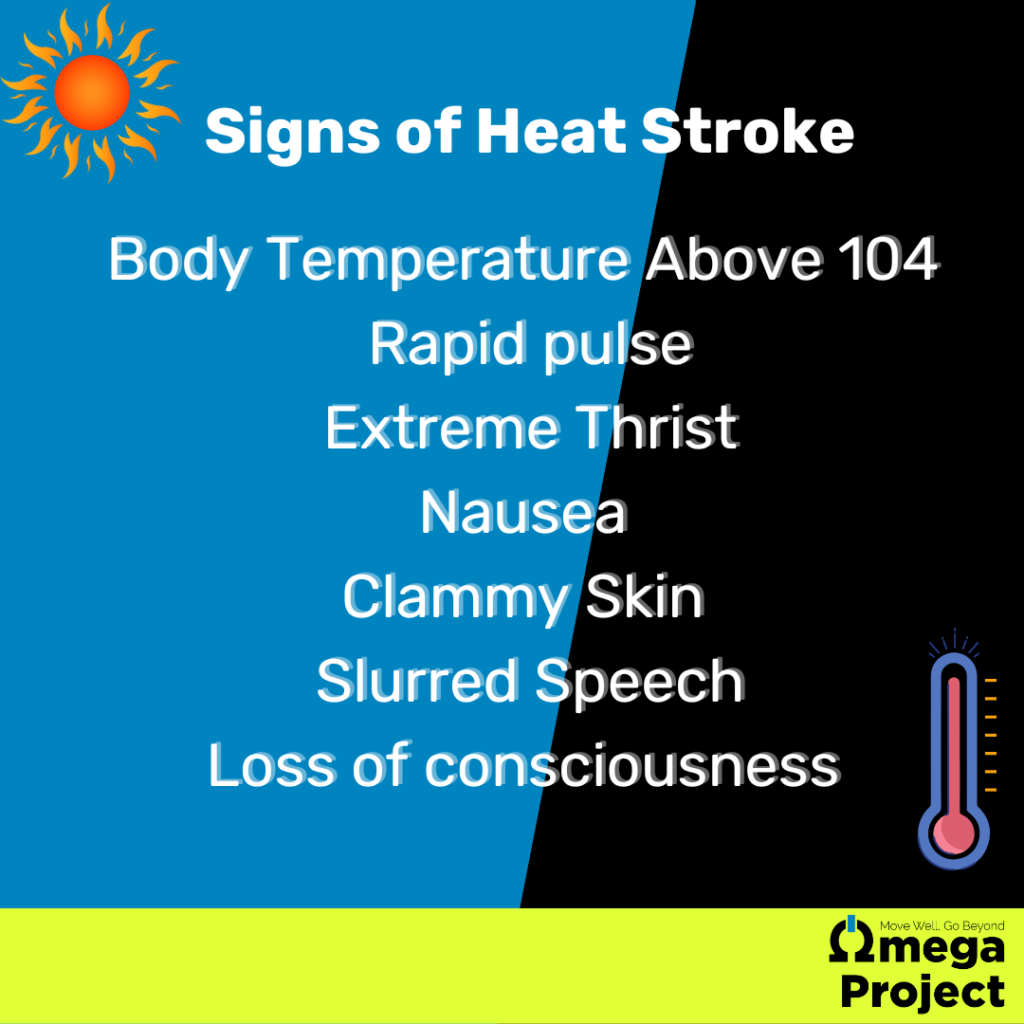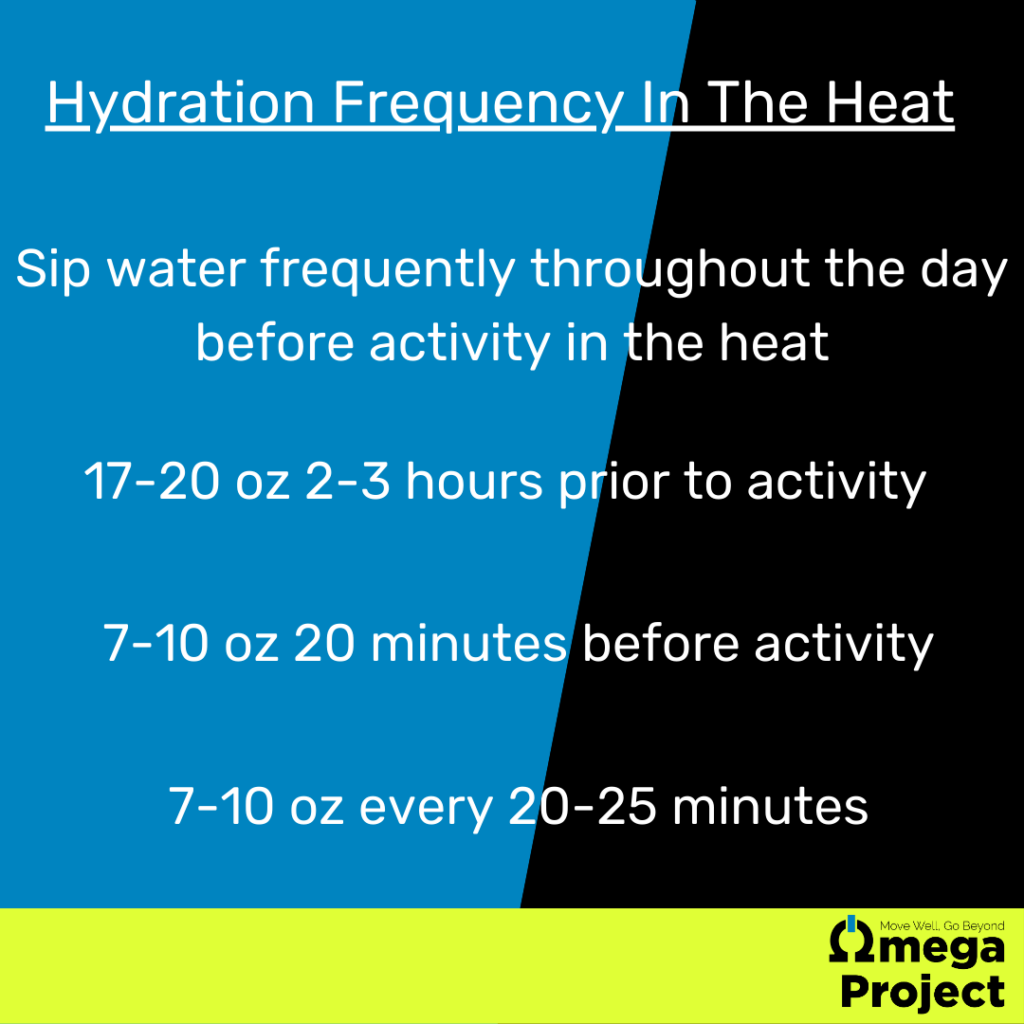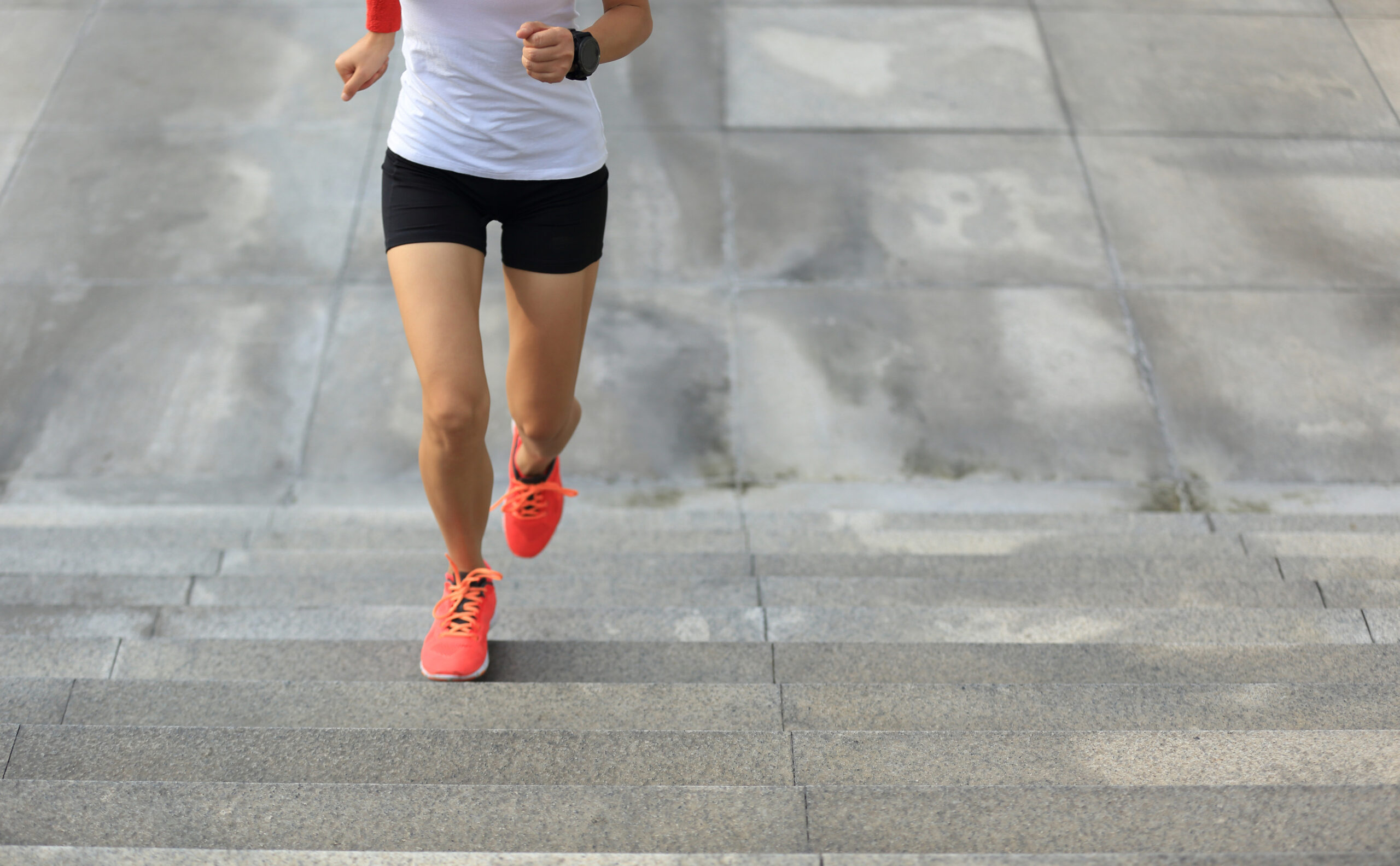Summer and the outdoors go together like peanut butter and jelly, but it’s always important to ensure you’re safely exercising in the heat. Below we will review four types of heat illness and how to reduce your risk as you play in the sun this summer!
4 Types of Heat Illness
Not all heat illnesses are created equal and vary in severity. Generally, we classify heat illness into four categories: exercise-related muscle cramps, heat syncope, heat exhaustion, and heat stroke.
Exercise-related muscle cramps are the most common form of heat illness and one most people who have been outside for too long have experienced.

It is more common in muscles that cross two joints, such as the hamstring or gastrocnemius. Often you will feel the muscle “twitch” before a full-blown muscle cramp happens. Stopping the activity, gently stretching the involved muscles, and rehydrating are recommended to avoid a more limiting cramp or possible muscle strain/tear.
Heat Syncope is dizziness or possibly loss of consciousness caused by overheating. If you or someone around you is showing these signs, get them into a cool area, encourage hydration, and elevate their legs above their heart. These people generally will have a little bit of an elevated temperature but not as much as the more severe heat-related illnesses (reviewed below). It is also advised to follow up with a primary care doctor or cardiologist to rule out any underlying cardiac implications.
Heat Exhaustion is among the more severe heat-related illnesses and occurs when one’s body temperature rises to a level between 98.6 -104 degrees F. In general, this is seen when someone is exposed to heat for an extended time, whether it be on the tennis court, on a run, or even just working in the garden. Symptoms include fatigue, anxiety, headache, heavy sweating, a weak, rapid pulse, and decreased performance. Stopping the activity, getting into a cool place or shade, and drinking cool fluids to lower body temperature are all remedies needed to avoid turning heat exhaustion into heat stroke.
Heat Stroke is a medical emergency. Heat stroke is characterized by a core body temperature of greater than 104 degrees F as a result of overexposure to high temperatures. This is a serious condition resulting in central nervous system impairments, including irritability, difficulty speaking, confusion, rapid pulse, dizziness, skin that is clammy but may also be hot to the touch, nausea, and even unconsciousness. Severe heat stroke can be fatal, so it is imperative to call 911 and rapidly cool off as quickly as possible using cold towels and ice.

How can we prevent heat-related illness?
The easiest way is to know yourself. If you have had a heat-related illness before, then you are susceptible to having an episode again, especially if you neglect warning signs and fail to hydrate properly.

This leads us to the next mode of prevention, hydration. Start thinking about hydrating 24 hours before an activity in the heat by taking in fluids in small intervals throughout the day. On the day of an event is recommended that you drink 17-20 oz of
water or sports drink 2-3 hours before any activity, 7-10oz every 20 minutes before, and then an additional 7-10 oz every 20-25 minutes while performing said activity in the heat.
Even mild dehydration can impair the body’s ability to regulate its temperature due to lower blood volume, which can begin the cascade of heat-related illness. If you are out for long bouts of exercise in the heat, hydrating with water alone will not do the job. A sports drink containing electrolytes such as sodium and potassium can prevent hyponatremia which occurs when we do not have enough sodium in the bloodstream. There are several electrolyte tablets and powders on the market, including Nuun, Liquid IV, and LMNT. All of these have different ratios of electrolytes, so it is important to read the labels.
Allowing your body proper time to acclimate to the heat is also necessary. It takes about 2-4 weeks for your body to begin to acclimate to the heat. Think about reducing the intensity or exercising for shorter durations to give your body the time it needs to adjust. In addition, it is discouraged to begin a new strenuous exercise routine outside in the heat, so try working indoors first and transitioning outside if possible.
Last but not least, I’m sure everyone has heard someone say, “It’s not the heat…it’s the humidity that gets you.” I agree with this dad-wisdom. The excess moisture in the air limits the evaporation of sweat from our skin. This can cause a quick increase in body temperature and limit the body’s ability to cool itself, and lead to the start of heat illness. Checking the dew point, which is available on most weather apps, before going out is always recommended. Consider increasing your hydration intake at a dew point over 70.
Hopefully, you feel more comfortable safely getting outdoors this summer! Schedule a discovery visit to learn more and address any PT needs you may have!

